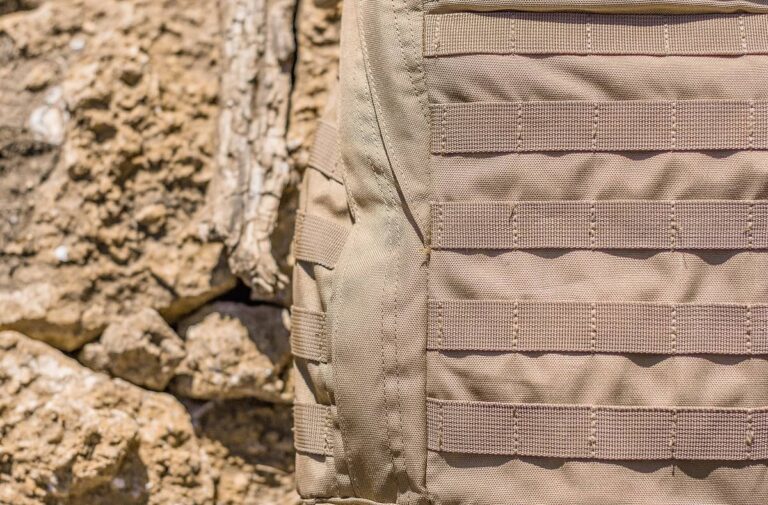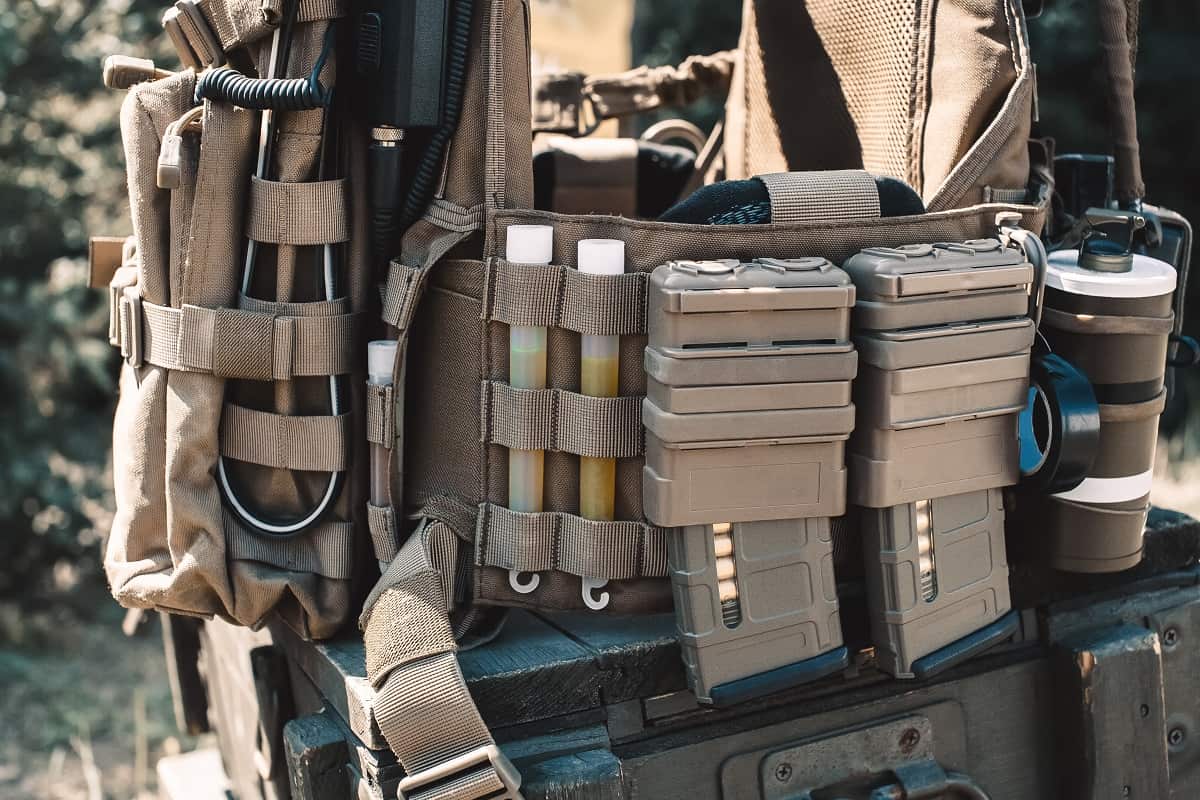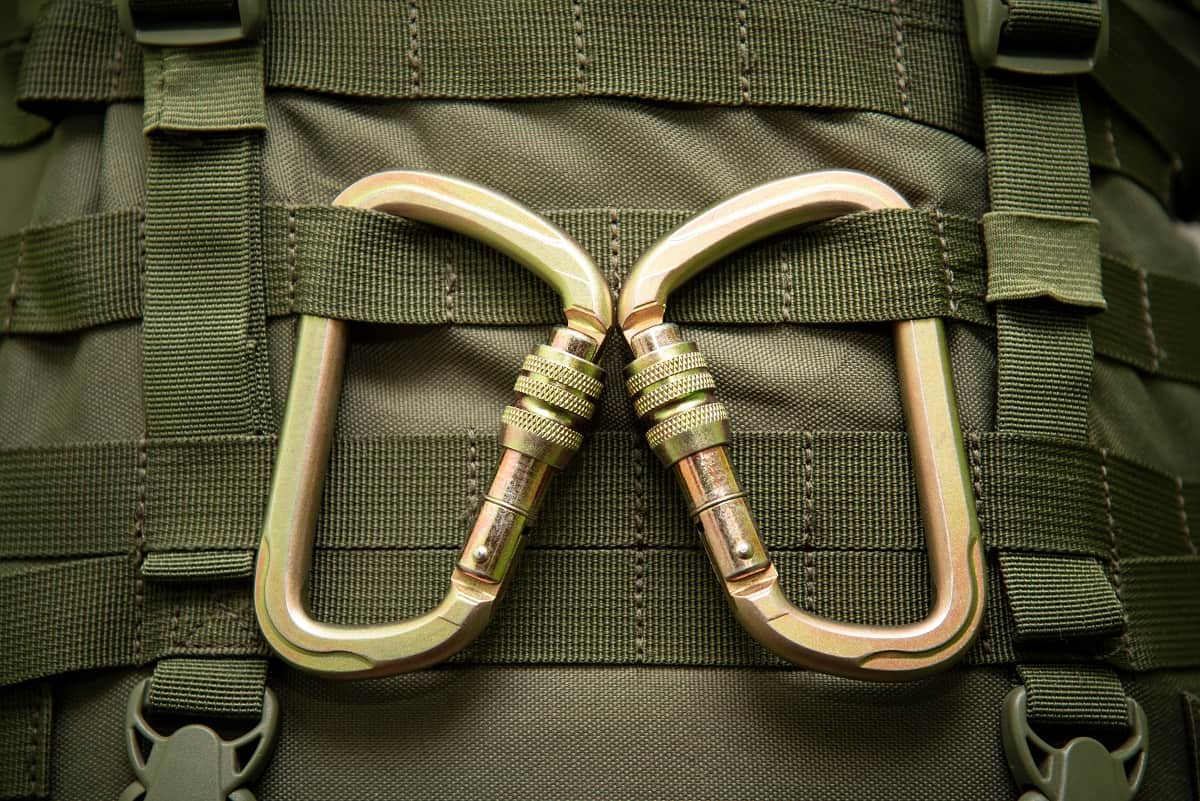Signup for our monthly newsletter and get your FREE "Tactical Gear" Guide
How to Use Tactical Backpack Loops
- Home
- Tactical Backpacks Advice
- How to Use Tactical Backpack Loops

This site contains affiliate links to products. We may receive a commission for purchases made through these links.
The loops of a tactical backpack can be super handy once you know how to use them properly. You will be able to increase the volume of your bag while preventing wet, dirty, or smelly clothing from contaminating the rest of your gear and equipment.
Even though these loops are a great way to carry additional gear, they should be used sparingly. This is because loading the loops of a tactical backpack with too much weight could cause you a back injury or a fall. If you have ever gone on long journeys with a bag on your back, you would know just how important comfort is.
In this article, we will be discussing what tactical backpack loops are, how to use them, and precisely what you can use them for. So without further ado, let’s take a look at how you can use tactical backpack loops on your next adventure.
Table of Contents
What are Tactical Backpack Loops?
How to Use Tactical Backpack Loops
What are Tactical Backpack Loops?
Backpack loops are webbing loops that are stitched into your bag. They allow you to attach a wide range of equipment and tools to your backpack, making it much easier to carry different objects.
Some tactical backpacks come with loops that are designed in a series – these are called daisy chains. You will also be able to purchase bags that feature individual loops.
Reinforced nylon is the most common and popular choice of material used for making these loops. This is because nylon is very strong and durable, meaning that it is perfect for holding heavy or large objects.
These loops can come in many shapes and sizes. Larger and thicker loops are purposely designed to hold heavy and bulky equipment. On the other hand, thinner and smaller tactical backpack loops are designed to hold smaller, lighter tools.

How to Use Tactical Backpack Loops
These loops are extremely easy to use and will make your next adventure much easier and more manageable. However, as noted, your experience might be the opposite if you don’t use the loops wisely. It goes without saying that the way you use them will determine whether you’ll have a disastrous or exciting experience.
To help out, below are some of the expert-recommended tips and tricks that you need to keep in mind when using your backpack’s loops. Following them will help ensure you keep your items safe while ensuring you stay comfortable throughout your trip.
Ensure Stability, Security, and Proper Weight Distribution
Most loops simply require you to clip on your gear with a carabiner or a webbing strap. With that being said, it is important that you ensure that heavier objects are securely fastened and stable. It is also a smart idea to balance out the weight of objects you attach to the loops. For example, if you use a carabiner to secure a heavy piece of equipment to the left side of your bag, you will want to attach any other tools using the loops on the right side of the backpack. This will make carrying the bag much more comfortable and manageable.
If you wish to create a custom rigging for heavier tools, start by attaching objects to the loops using a carabiner or a strap. You will then need to use an inelastic string or rope to interconnect your small backpack loops. This will ensure that the object does not swing or sway – instead, its center of gravity will stay close to yours. Again, this will make the tactical backpack much easier to carry.
Plan Where You’ll Place the Items
If your tactical backpack has loops on the shoulder straps, make sure you use them for important items that you want to access within arm’s reach. These access items include your walkie-talkie, GPS, map case, and binoculars. Again, make sure you distribute the weight evenly or achieve a balanced load on each side to prevent unnecessary fatigue.
You must also consider the weather, which is most of the time unpredictable, and the fact that you might come across puddles and bodies of water. That is why it’s not advisable to use the loops for your non-waterproof or non-water-resistant items. After all, most tactical backpacks are waterproof or water-resistant.
Buy Quality Attachments
Since you will most likely need attachment accessories to enjoy the benefit of backpack loops fully, make sure you take time when choosing. Even if you follow the tips and tricks provided above, you might lose your items if the attachment accessory is flimsy.
For instance, low-quality plastic carabiners and straps might not be able to last long because of the weight they carry. Therefore, they might break along the way without you even noticing until the time that you need the particular item.

What Can Tactical Backpack Loops Be Used For?
Tactical backpack loops can be used to carry any objects that you would prefer not to store inside of your bag. In other words, you can use them to carry any items or tools that you need easy access to. They are also perfect for carrying items that are sharp, such as knives, axes, or ice picks.
The space inside of your backpack should be used to store objects that require some protection. For instance, you should keep spare clothes, food, water, and a first aid kit inside your tactical bag. If you attach large items to the loops, you will save plenty of space for other, more fragile goods.
You should also attach all dirty gear to the loops – this will prevent them from spoiling the clean equipment and clothing inside of the backpack. With that being said, strong-smelling items, such as fuel for a fire, should be attached to the loops.
Different Loops and Their Suggested Uses
One of the secrets of knowing the use of loops understanding the most common backpack loops to ensure you’re attaching the right kind of extra gear. This allows you to take advantage of backpack loops, ensures comfortable multi day backpacking trips, and prevents any damages to your bag.
Below are some loops you’ll find on tactical backpacks, climbing backpacks, backpacking backpacks, hiking backpacks, and other types of outdoor backpacks.
- Gear Loops
These are the kinds of loops commonly found on the front face of outdoor backpacks. These are perfect for strapping in your trekking poles and other similar items.
You can also use them for more complex tools, such as picks and axes, just by simply dropping the tool’s handle through the loop. Then, rotate the tool’s handle upward, allowing the bag’s elastic hook to secure it in place.
You’ll also find that most tactical outdoorsy packs or daily carry backpacks have bottom loading gear loops. Since they hang at the back, attaching some items to them might make your trip uncomfortable.
Again, ensure that you plan well on what substantial items to put. Most use them for bulky items, such as their sleeping bags and tents. However, make sure you attach it in a way that it won’t hang too low, hitting your thighs or legs throughout your journey.
- Daisy Chains
As mentioned, these are multiple backpack webbing loops arranged linearly in front of your backpack, usually on the sides. These are perfect for small essential items or pointy items, such as pens, Swiss knives, and even a tiny flashlight.
- Pouch Attachment Ladder System (PALS)
The PALS incorporated in the bags produced by tactical backpack makers meet the needs of the US and British Army and Armed Forces. Today, you can find several outdoor backpacks with this system.
Basically, it’s like the daisy chain, but the webbings are a little larger and arrange in several rows. You can also find them distributed throughout the backpack, from the shoulder straps to the extra pockets on the sides, and the front.
This nylon webbing is compatible with Modular Lightweight Load-Carrying Equipment (MOLLE) backpack attachments. Most of these are external pouches that can keep essential survival and lethal items.
- Tie Out Loops
Some backpack brands incorporate this loop instead of the daisy chain because it’s lighter in weight. Thus, they can stitch as many as they want to in their bag’s perimeters, lid top, sides, and back, without worrying about adding too much weight to it.
These tiny loops are great for attaching elastic cords or a luggage strap to hold particular gear items. You may also choose to twine them and then hang your gear; hence, the name: tie-out loops. Some of the substantial items you can attach to them are solar chargers, extra pair of boots, and wet tarps.
- Other Loops
Apart from the typical loops installed on backpacks, you can also take advantage of some of the additional features of your bag. You might not have noticed, but they actually create loops, especially since they’re long enough to allow adjustability. Here are two of the most common ones:
- Hip Belt Loops
Some manufacturers have tactical backpacks with waist straps or belts that usually have loops for you to hang or attach additional equipment. Although you might not use them for your extra gear, especially if you have a high-capacity pack, they improve the bag’s support and stability features. If you plan to use them, though, they’re perfect for your climbing or bungee cords, carabiners, and quickdraws. You may also use them to hook your water bottle holder for easier access.
- Sternum Strap Loops
Like the hip strap loops, the sternum straps found on some backpacks enhance stability and support. The loops they create are perfect for hanging items with the help of attachment accessories. Choose small, lightweight items that you need quick access to but won’t make you feel uncomfortable when they start swinging or swaying while you walk.
Conclusion
Tactical backpack loops are webbing loops that are stitched into your bag – they can be used to carry heavy and dirty equipment. If you know how to use them properly, these loops can be very useful when on an adventure.
Most tactical backpack loops can be used by simply attaching goods with a carabiner, webbing strap, or cable. It is important that you ensure that heavier objects are attached securely to the loops in order to prevent them from falling off or swinging. You could even tie these goods down using an inelastic rope.
As we have mentioned, these loops can be used to carry heavy objects. However, they are also perfect for separating dirty or smelly equipment from clean goods. Tactical backpack loops will save you plenty of space inside your bag. More fragile objects should be stored inside the backpack, while hard, heavy, and sharp goods should be attached to the loops.
Also, keep in mind that knowing how to use tactical backpack loops isn’t enough to maximize the bag’s functionality, secure your items, and make your trip successful. You must also learn how to pack and organize the items inside your bag. Lastly, always ensure you don’t overpack, even if your backpack can handle and store many items.
